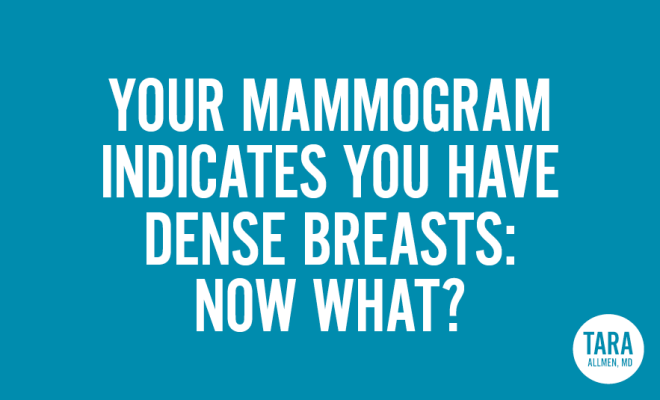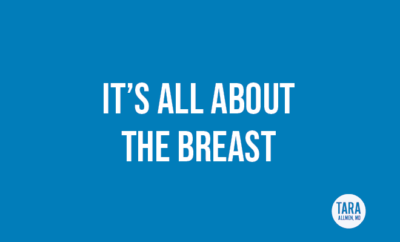
Breast Cancer Prevention
Your Mammogram Indicates You Have Dense Breasts: Now What?
In my experience, there is nothing women fear more than breast cancer. Nothing! We should actually spend our valuable time worrying about preventing heart disease, which is the number 1 killer of women in the US. However, this is Breast Cancer Awareness month, so a heart disease blog will have to wait its turn.
The foundation for all current breast cancer screening is mammography. While it is not a perfect test, it is the best available screening tool we have. The technology continues to improve, however, and the latest and most accurate test is called tomosynthesis digital mammography. I know it hurts to have your breasts flattened out like pancakes every year, but breast cancer is worse. So we all have to suck it up…literally! I like to have fun with the technician who I refer to as the “torturer”. She knows I am kidding…sort of.
Besides looking for breast cancer, a mammogram is also identifying breast density. What does that mean? Breasts are made of fibrous, glandular and fat tissue. This is probably the one instance where most women would like to have more fat, because fatty tissue in the breast allows for easy viewing. When there is a lot of fibrous and glandular tissue, it is much harder for the radiologist to see inside the breast clearly. That is when you will get a letter from the radiology department telling you that your breasts are dense and an ultrasound is recommended. The reason that dense breasts warrant an additional evaluation is because they are associated with a higher risk of breast cancer. And there is no rhyme or reason regarding which one of us will have dense breasts. It has nothing to do with breast size, body weight or anything else. It just is what it is.
So when you get that letter telling you that you have dense breasts, what should you do?
Surprisingly, there is no high quality clinical evidence showing that additional
testing for dense breasts reduces breast cancer mortality. What additional testing can do is detect 3-4 more cancers that were not seen on mammography. But that small detection rate comes at a high price, because hundreds of us will have to undergo biopsies every year to find those few women with cancer. This important decision should be made with the help of your trusted health care professional.
So who should consider further testing for dense breasts on mammogram?
If you happen to have dense breasts as well as an increased risk for breast
cancer, like getting your first menstrual cycle early or having children later in life, being older, having a first degree relative with breast cancer or a personal history of previous breast biopsies, it makes sense to follow the radiologist’s recommendation and schedule a breast ultrasound. And if you are very high risk for breast cancer, like those of you who carry the BRCA gene mutation, you should consider getting an MRI.
Let me tell you what I do when my radiologist tells me, every single year, that I have dense breasts on mammography. Since I do not have additional breast cancer risk factors, I compromise and get a breast ultrasound every 2-3 years. There is no evidence for this approach, but it has worked out just fine for me.
So here is the bottom line. Most women with dense breast tissue on mammography will never develop breast cancer, even though having dense breasts increases our risk. The decision to undergo additional testing should be between you and your healthcare professional. There is no “right” answer.
Tara Allmen, MD Credentials:
– Board Certified Gynecologist and Nationally Certified Menopause Practitioner
– New York City’s Leading Expert In Menopause
– President, North American Menopause Society Foundation
– Fellow of the American College of Obstetrics and Gynecology
– New York City’s Top Gynecologist, 2015
– Five Star Rating From Doctor’s Choice Awards
– Five Star Rating From HealthGrades









You must be logged in to post a comment Login